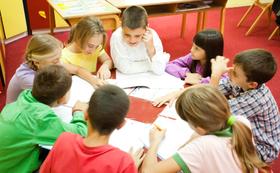For the 2025-26 school year, there are 4 public high schools serving 630 students in Elma School District. This district's average high testing ranking is 4/10, which is in the bottom 50% of public high schools in Washington.
Public High Schools in Elma School District have an average math proficiency score of 24% (versus the Washington public high school average of 34%), and reading proficiency score of 56% (versus the 65% statewide average).
Public High School in Elma School District have a Graduation Rate of 85%, which is more than the Washington average of 84%.
The school with highest graduation rate is Elma High School, with ≥95% graduation rate. Read more about public school graduation rate statistics in Washington or national school graduation rate statistics.
Minority enrollment is 32% of the student body (majority Hispanic), which is less than the Washington public high school average of 50% (majority Hispanic).
Overview
This School District
This State (WA)
# Schools
6 Schools
859 Schools
# Students
1,695 Students
392,562 Students
# Teachers
93 Teachers
19,037 Teachers
Student-Teacher Ratio
18:1
18:1
Student By Grade
District Rank
Elma School District, which is ranked within the bottom 50% of all 306 school districts in Washington (based off of combined math and reading proficiency testing data) for the 2022-2023 school year.
The school district's graduation rate of 50% has decreased from 90-94% over five school years.
Overall District Rank
#152 out of 307 school districts
(Top 50%)
(Top 50%)
Math Test Scores (% Proficient)
37%
41%
Reading/Language Arts Test Scores (% Proficient)
47%
53%
Science Test Scores (% Proficient)
43%
49%
Graduation Rate
50%
84%
Students by Ethnicity:
Diversity Score
0.51
0.68
% American Indian
1%
2%
% Asian
1%
8%
% Hispanic
26%
26%
% Black
1%
5%
% White
65%
50%
% Hawaiian
n/a
1%
% Two or more races
6%
8%
All Ethnic Groups
District Revenue and Spending
The revenue/student of $14,592 in this school district is less than the state median of $18,796. The school district revenue/student has declined by 10% over four school years.
The school district's spending/student of $15,696 is less than the state median of $19,247. The school district spending/student has declined by 10% over four school years.
Total Revenue
$25 MM
$20,715 MM
Spending
$27 MM
$21,212 MM
Revenue / Student
$14,592
$18,796
Spending / Student
$15,696
$19,247
Best Elma School District Public High Schools (2025-26)
School
(Math and Reading Proficiency)
(Math and Reading Proficiency)
Location
Quick Facts
Rank: #11.
East Grays Harbor High School
Alternative School
(Math: <50% | Reading: ≥50%)
Rank:
Rank:
7/
Top 50%10
705 West Waldrip
Elma, WA 98541
(360) 482-5086
Elma, WA 98541
(360) 482-5086
Gr: 9-12 | 9 students Student-teacher ratio: 5:1 Minority enrollment: 33%
Rank: #22.
Elma High School
(Math: 25-29% | Reading: 55-59%)
Rank:
Rank:
5/
Bottom 50%10
1011 West Main
Elma, WA 98541
(360) 482-3121
Elma, WA 98541
(360) 482-3121
Gr: 9-12 | 511 students Student-teacher ratio: 20:1 Minority enrollment: 32%
Rank: n/an/a
705 W Waldrip
Elma, WA 98541
(360) 482-5086
Elma, WA 98541
(360) 482-5086
Gr: K-12 | 60 students Student-teacher ratio: 60:1 Minority enrollment: 34%
Rank: n/an/a
East Grays Harbor Open Doors
Alternative School
705 W Waldrip
Elma, WA 98541
(360) 482-5086
Elma, WA 98541
(360) 482-5086
Gr: 9-12 | 50 students Minority enrollment: 30%
Recent Articles

Public School Open House & Enrollment Season Guide
A parent-focused guide to the public school open house and enrollment season, with expert questions, timelines, and decision tips.

School Supply Budget 2026: Fees, Books, Tech Costs
School Supply Budget 2026 guide for parents, covering fees, textbooks, technology, and hidden extras to plan ahead.

Education Funding in America (2025 Update)
Comprehensive 2025 update on public school funding in America, new federal and state policies, per-pupil spending, and equity challenges.





